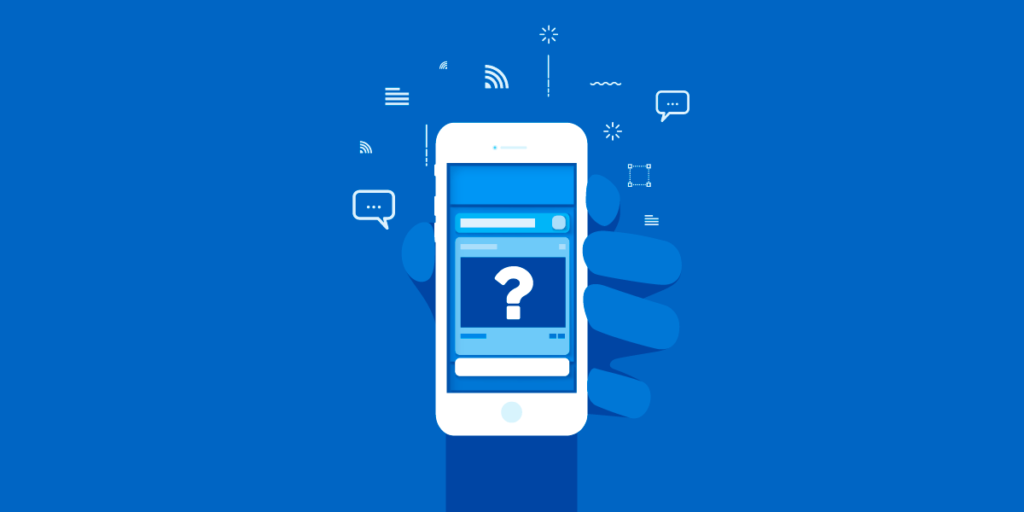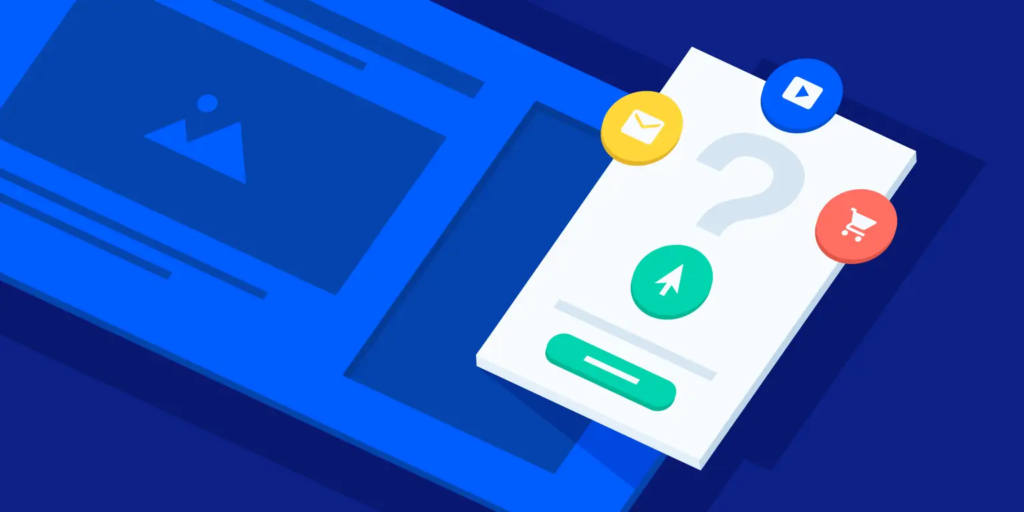
In an increasingly dynamic and competitive landscape in the world of digital marketing, we as professionals find ourselves constantly faced with a fundamental decision: to build an audience for the business/brand or to run conversion/sales ads?
Each approach has its fervent advocates, passionately arguing about the effectiveness and unique benefits of their choice. On one side, we have the organic and long-term strategy of building an engaged and loyal audience. On the other, conversion ads offer quick and measurable results, driving immediate actions from consumers.
In this post, we will unravel the pros and cons of each approach and provide valuable insights to help you navigate this complex territory. If you have ever found yourself torn between building lasting relationships with your audience or directing your efforts toward converting potential customers into buyers, this guide is for you.
Let’s get started! 🚀
Competing for Attention
Competition for consumer attention has reached unprecedented levels, requiring marketers to be agile and strategic in their approaches.
Today, as you are well aware, the information we consume is so fast-paced that within less than a day, the same information you saw previously becomes obsolete and forgotten.
As a result, media experts face the challenge of standing out amidst this noise and capturing the attention of their target audience. To excel in this highly competitive landscape, media specialists need to adopt a strategic and creative approach.
For example:
- Know Your Audience: Deeply understanding who your target audience is, and what their interests, needs, and online behaviors are is crucial. This allows you to create highly relevant and personalized content that truly grabs your audience’s attention.
- Provide Value: Instead of simply trying to sell products or services in any ad, focus on providing genuine value to your audience. This can be done through educational, inspiring, entertaining, or informative content that adds value to people’s lives.
- Be Authentic and Transparent: Today’s consumers value authenticity and transparency. Be honest about who you are, what your brand stands for, and what your values are. This helps build trust and connection with your audience.
- Utilize Multiple Channels: Don’t limit yourself to just one media channel. Explore a variety of platforms such as social media, blogs, podcasts, videos, and email marketing, among others. This expands your online presence and increases the chances of “hooking” your audience at the right time.
- Innovate and Experiment: Always be open to trying out new ideas, content formats, and marketing strategies. Innovation is essential to stand out in such a dynamic and constantly changing environment.
However, not everything goes as planned in theory, right?
It’s not enough to just grab attention without a clear objective. What is your goal in capturing social media users’ attention with your ad? Is it to convert them immediately or to build a relationship and increase your audience?
This dichotomy puts marketers at a crossroads, where the choice between building long-term loyalty or ensuring immediate sales may seem challenging. However, delving deeper into this debate, we discover that it’s not just a choice between now and tomorrow, but rather about finding a balance between both approaches to achieve sustainable success.
So, how do you find the balance between these two goals?
Let’s break them down to understand the details of each objective better.
Building An Audience

Building an audience refers to the process of cultivating a base of engaged users interested in your product, service, or brand. This is often done through content marketing strategies, active presence on social media, search engine optimization (SEO), and delivering value without asking for anything in return, among other tactics. The benefits of building a qualified audience include:
- Long-lasting Engagement: By cultivating a loyal audience, you create a follower base that is genuinely interested in what you have to offer. This can lead to more consistent engagement over time.
- Credibility and Trust: As you provide value through relevant and helpful content, you gain the trust and credibility of your audience. And for me, this is undoubtedly the key factor in scaling any business, as it increases the likelihood of conversions down the line, and qualified conversions at that. For example, a fitness instructor who shares effective workout videos and nutrition tips can be seen as a reliable source of information, making it much easier to sell a product/service to their audience.
- Potentially Lower Cost: While building an audience may require investment in time and resources, once established, it can result in a lower cost per customer acquisition than other forms of paid advertising. This is because engaged followers are more likely to convert into customers and organically promote your brand to their social networks.
- Qualified Recommendations: Once an audience is built and trust is established between the brand and the audience, organic recommendations from this audience tend to have insane conversion quality. You know, if someone you trust recommends a product or service, you immediately believe that recommendation is exactly what you need. Therefore, quality and assurance in yet another conversion for the business.
Like everything in life, we have our preferences in the digital world. We know which YouTube channels we like the most, which Instagram and Facebook profiles bring us more trust and relevant content, which newsletters we invest our time in consuming, which podcasts we prefer to watch, and so on.
This gives us immeasurable confidence to consume content from that person or that brand/business.
And in the end, you know that you are a loyal ambassador to that page, and therefore, when it comes to buying or recommending something, you will think of that page before anything else.
In other words, in your own business or job, this tactic ends up being the same thing. Building an audience, creating a relationship of trust and sincerity, and engaging that audience are what will make your business a leader in its field.
But we have the other side. The side that many startups “prefer.” The side of conversion, sales, and money in the pocket immediately.
Running Conversion Ads

Running conversion ads involves targeting paid campaigns to encourage specific user actions, such as making a purchase, filling out a form, or downloading an app.
Here you have the possibility to organize your targeting, make your aim more precise, and thereby bring about the result immediately.
The benefits of conversion ads include:
- Immediate Results: Conversion ads are designed to generate quick and measurable results. They are particularly effective when you have a specific goal in mind, such as increasing sales of a new product or boosting lead generation for a service. For example, a clothing store can run conversion ads to promote a weekend sale and drive immediate sales during that seasonal time.
- Precise Targeting: With advertising platforms like Google Ads and Meta Ads, you can target your audience with great precision, directing your ads to users with specific characteristics, interests, and behaviors. Besides “showing up” at the right time, on the right day, and in the right place for your target audience. For example, a B2B software company can target conversion ads to small business marketing professionals in certain geographic regions and track how many conversions are generated from these ads. What could be better than that?
- Measurement and Optimization: Conversion ad campaigns offer detailed metrics immediately, allowing you to monitor your campaign performance in real-time. This greatly aids in making quick adjustments and optimizations to maximize return on investment (ROI). Tracking how many conversions are generated from these ads.
With my experience running ads during this time, I can assure you that running conversion ads is extremely effective in the following examples:
- Fashion E-commerce: An online fashion store can run conversion ads to promote a seasonal sale, offering exclusive discounts on its products. The ads can be targeted to reach users interested in fashion and direct them to a specific landing page where they can make an immediate purchase.
- Business Consulting Services: A business consulting firm can run conversion ads to promote a free webinar on growth strategies for small businesses. The ads can be targeted to reach small business owners and executives and encourage them to sign up for the webinar, providing their contact information for follow-up.
- SaaS Services: A SaaS company can run conversion ads to promote a free trial of its platform. The ads can be targeted to reach companies in a specific industry and direct them to a landing page where they can sign up for the free trial and start using the software immediately. It’s fully effective if you know how to target your ads and have quality ad copy and landing pages.
- Online Course: An online course instructor can run conversion ads to promote a new course on digital marketing. The ads can be targeted to reach marketers and entrepreneurs and encourage them to enroll in the course, providing a special discount for early registrants.
- Fitness App: A fitness app can run conversion ads to promote a 30-day free trial offer for new users. The ads can be targeted to reach users interested in fitness and direct them to a landing page where they can sign up for the free trial and download the app.
Main Differences
The main difference here, actually, isn’t a secret. It’s the time frame for results from the actions and their overall costs.
While building an audience and engagement is a long-term action, running conversion ads will often bring results (though not always as expected) immediately.
- Maturation Time and Campaign Objectives: Building an audience is a long-term strategy focused on creating relationships and increasing awareness, whereas conversion ads are more direct and geared towards immediate results.
- Strategic Approach and Costs: Building an audience requires ongoing investment in content and engagement, while conversion ads are a paid strategy that can yield results more quickly but at a direct cost.
Building an audience offers the opportunity to cultivate long-lasting relationships with your audience, establish credibility and trust in your brand, and ultimately create a solid base of engaged followers. On the other hand, running conversion ads provides quick and measurable results, allowing you to achieve specific business goals such as increasing sales or generating a higher volume of leads.
In the end, both building an audience and running conversion ads are essential parts of a successful digital marketing strategy. The key is to find the right balance between both approaches, depending on your campaign objectives, your business’s sales funnel stage, and the available budget. Combining these two strategies can have a powerful impact on your success with digital marketing.
Conclusion
We have seen the benefits and differences between building an audience and running conversion ads, two fundamental strategies in the arsenal of any digital performance specialist. Throughout this guide, it has become clear that both approaches have their distinct place and value in an effective marketing strategy.
Always remember that it’s not just about building an audience or running conversion ads, but rather finding the right balance between the two approaches to achieve lasting and significant results. With the right strategy and diligent execution, the sky’s the limit for your success in the digital world.
Now, tell me, which action has been more successful for your business? And which one do you enjoy planning and executing the most?
Feel free to give me feedback and share your stories with me as well. I’ll be very happy to receive your message.
Don’t forget to subscribe to my newsletter on Medium to receive exclusive content on performance, paid media, productivity, creativity, marketing as a whole, and some geeky stuff.
Thank you for reading this far. See you next time!




